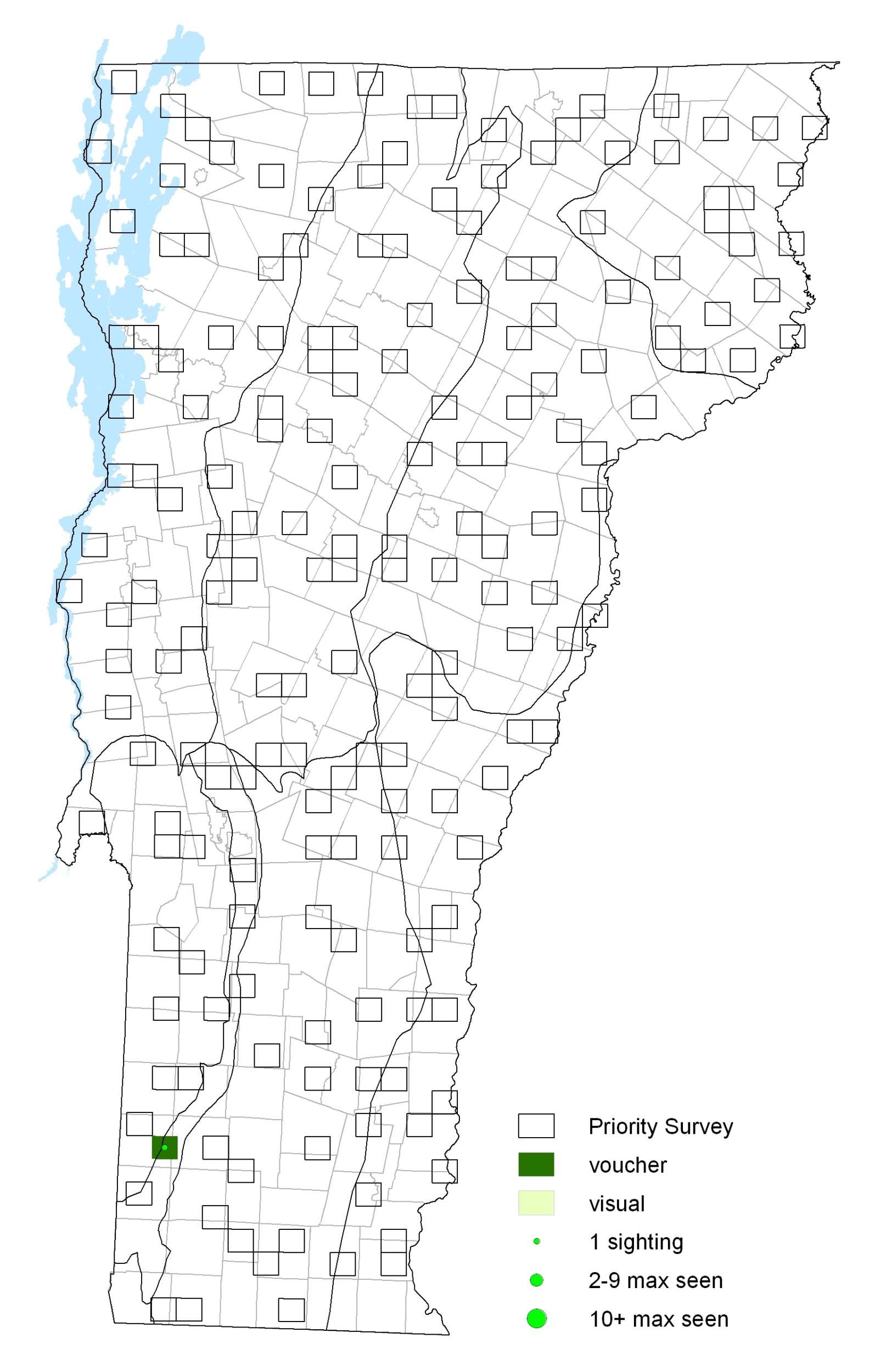|
Resident Conservation Status North American Range |
Their populations are often separated by large distances and they are considered specialists as far as habitat choice. The Frosted Elfin relies on disturbed environments for which periodic fires maintain early succession. They are the only butterfly we know of able to pupate below ground and it is thought they do so to survive the periodic burns. Though their penchant for disturbed environments may seem like a safe adaptation, these areas are often the first to be developed and this can destroy their hostplants making it impossible for separated populations to survive. Eggs are laid singly on flower buds of host plant; caterpillars eat flowers and developing seedpods. Chrysalids hibernate in loose cocoons in litter beneath the plant.
Identification
One short tail on the hindwing. Upperside brown; male with long oval dark spot on leading edge of forewing. Below, postmedian line of forewing is irregular; that of hindwing is faint. Hindwing with submarginal black spot above tail.
Flight
Typically has one brood and flies from May to June. There is only one record for Vermont. A specimen was taken on 28 May 2007 in Sunderland (K. Hemeon).
Distribution and Habitat
One record for Vermont from extreme southwestern Vermont. They tend to prefer dry places with poor soils like sand plains, pine barrens or disturbed areas with poor soils such as powerline right-of-ways or sand pits. Hostplants in Massachusetts reported to be Wild Indigo (Baptisia tinctoria) and Wild Lupine (Lupinus perennis). Adults nectar Bearberry (Arctostaphylos alpina), Oxeye Daisy (Leucanthemum vulgare) and probably other wildflowers.






